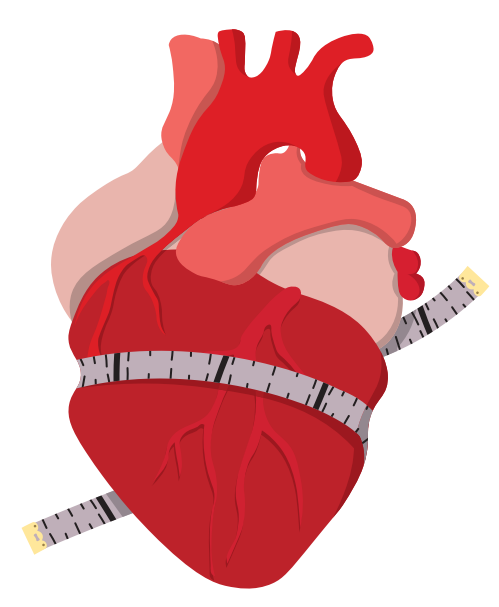Is Body Positivity Toxic?
How a Well-Intentioned Movement Crossed a Line
October 19, 2022
It is said that beauty is in the eye of the beholder, but the media will often only frame specific types of people- typically the young, tall, thin, and able-bodied- as ‘beautiful’. This is despite the fact that the vast majority of people don’t look anything close to that, and never will. That doesn’t mean that they can’t still be beautiful, or that they don’t deserve representation in popular culture. This was the founding principle behind the current iteration of the body positivity movement. What is rarely considered, however, is whether or not the movement could have gone too far.
According to the British Broadcasting Corporation (BBC), the body positive movement first started in the late 1960s and exists in retaliation to conventional ideas of beauty, including the idea that everybody should be thin. Initially, people wrote essays in editorials about how larger people were unfairly discriminated against in society. After momentum grew, Bill Fabrey in New York created the National Association to Aid Fat Americans (NAAFA), which has since been renamed to the National Association to Advance Fat Acceptance. The Fat Underground was created around the same time in California, and released their Fat Manifesto in 1973, which called for equal rights for larger people in all settings and labeled the diet industry as one of their primary enemies.
The movement was not perfect though. In the late 1900s, leaders would often try to oppress the voices of people of color, because they felt like it would muddle their message by including multiple issues. Unfortunately, this was quite commonplace at the time, with many groups ignoring voices that didn’t fit with their message, and their message only.
Currently, the movement mainly focuses on making sure people feel comfortable in their own skin, no matter what size or color it may be. It’s a great idea, but many believe that supporters of the movement have taken it a step too far. The current iteration of body positivity also fails to address the stigma that exists around different body types.
Jaqueline Howard, a health reporter for CNN explains in her article“The history of the ‘ideal’ woman and where that has left us” that centuries of societal pressure have cemented the idea of what is traditionally considered to be pretty, and many of those ideas are still echoed today. Many people will spend their lives surrounded by media telling them that there is a “correct” way to look in order to be considered beautiful, and that it’s not what they look like.
The body positivity movement tells people that they should love themselves, but it’s impossible to change that kind of mindset over night, and trying to can lead to toxic positivity and the suppression of negative thoughts. This way of thinking is unhealthy, and regularly leads to worsening body dysmorphia, anxiety, depression, and eating disorders- the opposite of what body positivity is trying to achieve.
Many supporters of the movement are angry with the diet and exercise industries, and understandably so. The industries have repeatedly taken advantage of societal pressures to be skinny, and used them to push diet and exercise regimens on people who were already perfectly healthy. But, as Abby Ellin, American author and journalist, wrote in an article for the New York Times that an idea has come forth that anyone who goes on a diet or starts exercising more, must be against body positivity, when that often isn’t even close to the truth. Loving yourself also means taking care of yourself, and it is more important now than ever to remember that the two are far from mutually exclusive.
It should also be kept in mind that when the NAAFA was created, the percentage of adult Americans considered obese was at 13%, according to the CDC- nowhere near near the 42% seen today. Even now, most people are not including obesity when saying that bigger bodies can be healthy too.
This is an important distinction because being excessively underweight or overweight can lead to a myriad of health complications. According to the CDC, obesity increases risk for many deadly or life-long afflictions, such as stroke, cancer, heart disease, diabetes, osteoarthritis, and many, many more.
As health and nutrition reporter Rachel Hosie pointed out in her article for Insider, there has lately been a push, especially in online communities, towards the idea that people can be healthy at any size, including sizes that almost no human bodies would ever reach in nature. Communities like this could be convinced that they are in no danger from their weight, even if that weight could be drastically shortening their lifespan. A study by the National Institutes of Health found that severe obesity can decrease life expectancy by nearly 14 years. When people are obese, there is a legitimate reason to be concerned about their health. When these dangers are minimized or outright dismissed, it leads people to believe that they aren’t at any risk, when that couldn’t be further from the truth. Whenever people try to point that out, however, they are attacked with a barrage of hateful comments calling them fat-phobic or anti-body positivity.
It is completely wonderful that people have different sized bodies, and representing that diversity is incredibly important. However, that does not give anyone the right to use body positivity as an excuse to promote toxic positivity, shame people for trying to be healthy, or encourage obesity. People are allowed to love and appreciate their bodies, and the central idea behind body positivity should be encouraged, but when that idea is twisted and used to harm people, that’s where a line should be drawn.












